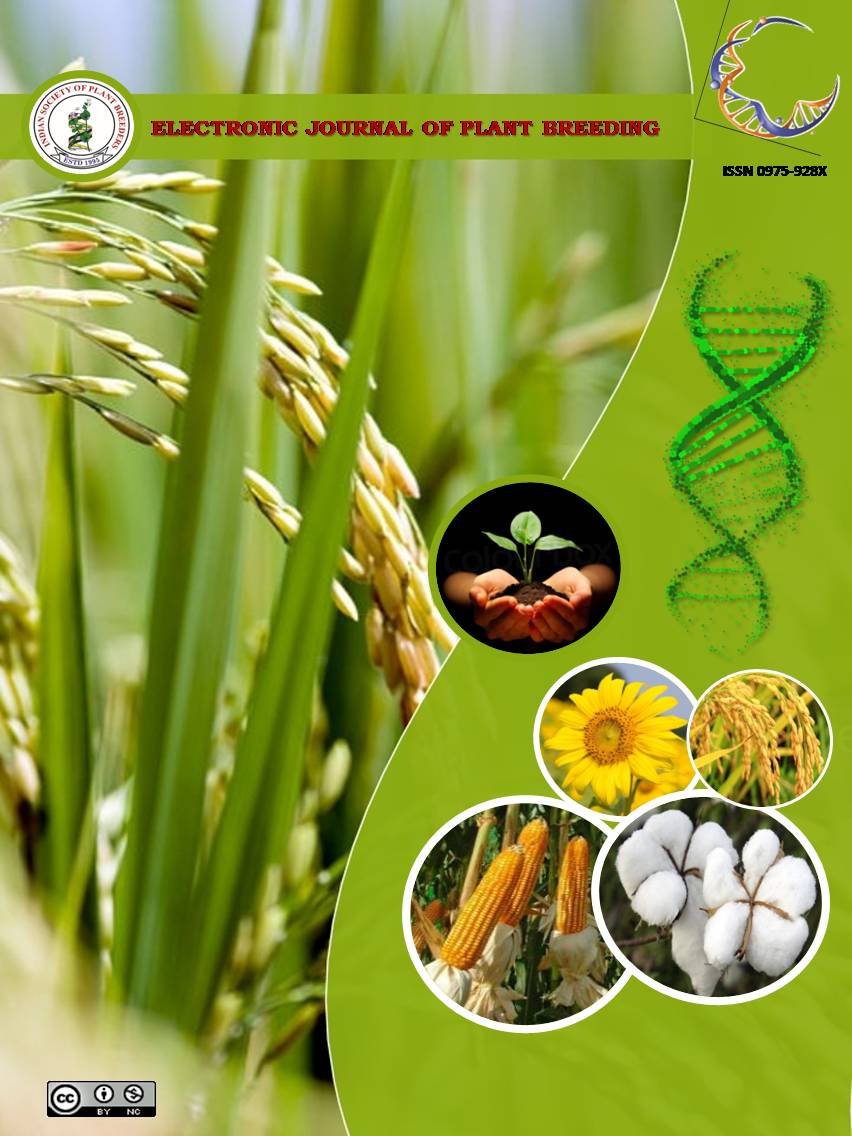Correlation and path analysis for seed yield and its components in sesame (Sesamum indicum L.)
Abstract
Sesame is one of the oldest cultivated crops, “known as queen of oilseed crops”. The field experiment was carried out to know the character association and also for determining the cause and effect situation through the assessment of direct and indirect effects of various yield contributing traits by using 45 sesame genotypes. Analysis of variance indicated the presence of good amount of genetic variability among the genotypes under study.Seed yield showed positive significantcorrelation with number of branches per plant, number of capsules per plant, capsule length, number of seeds per capsule and 1000-seed weight both at genotypic as well as phenotypic levels revealing that selection made on the basis of these characters will assist in enhancing the seed yield. The trait number of capsules per plant showed the highest phenotypic and genotypic correlation with seed yield followed by 1000- seed weight.Path coefficient analysis revealed that 1000-seed weight recorded the highest positive direct effect on seed yield followed by number of capsules per plant and number of seeds per capsules both at phenotypic and genotypic levels. Number of seeds per capsules, capsule length and plant height are the other traits which showed positive direct effect on seed yield. From the study it was concluded that, 1000-seed weight, number of capsules per plant and number of seeds per capsule were determined as most critical ones as both the correlation coefficients and the direct effects were high with seed yield per plant.

It is certified that:
- The corresponding author is fully responsible for any disputes arising due to the publication of his/her manuscript.
- The article has been seen by all the authors who are satisfied with its form and content.
- The sequence of names of authors in the by-line is as per their relative contribution to this experiment, giving due credit to all scientists who made notable contribution to it.
- All the authors fully understand that inclusion of any other co-authors or exclusion of any co-authors is not possible once the article has been submitted to the journal.
- The corresponding author takes full responsibility for this article.
- The address of the organization where the research was conducted is given.
- The article is exclusive for this journal, and the results reported here have not been sent (and will not be sent during its consideration by this journal) for publication in any other journal.
- Authors agree to abide by the objective comments of referees and do agree to modify the article into a short note as per the recommendation, for publication in the Electronic Journal of Plant Breeding.
- If published in Electronic Journal of Plant Breeding, the copyright of this article would vest with the Indian Society of Plant Breeders, who will have the right to enter into any agreement with any organization in India or abroad engaged in reprography, photocopying, storage and dissemination of information contained in it, and neither we nor our legal heirs will have any claims on royalty.


